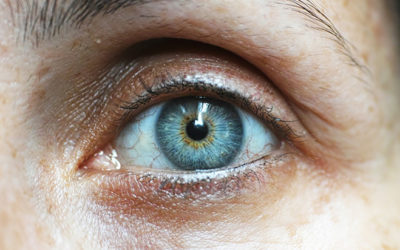Glaucoma treatment — the silent thief of sight
Glaucoma treatment — more than tunnel vision
As the leading cause of preventable blindness in New Zealand, glaucoma is a group of diseases that damage the eye’s optic nerve and can result in vision loss and blindness. However, with early detection and treatment, you can often protect your eyes against serious vision loss.
According to the National Eye Institute, the most common type is open-angle glaucoma with less common types including closed-angle glaucoma and normal-tension glaucoma
In open-angle glaucoma, the angle in your eye where the iris meets the cornea is as wide and open as it should be, but the eye’s drainage canals become clogged over time. This causes an increase in internal eye pressure and subsequent damage to the optic nerve.

At first, there no symptoms of glaucoma. There is no pain involved. Vision stays normal.
Without treatment, people with glaucoma will slowly lose their peripheral vision. People may miss objects to the side and out of the corner of their eye, giving off the effect of “tunnel vision”. Over time, glaucoma causes central vision to decrease until no vision remains — blindness.
So how can you prevent glaucoma?
The best approach to preventing glaucoma is early detection as there is no cure for glaucoma.
By the time a person is aware of vision loss, the glaucoma may be quite advanced. Without proper treatment, glaucoma can lead to blindness. But with regular eye exams you can preserve your vision.
A qualified optometrist can detect signs of glaucoma through a comprehensive eye exam. Some of the procedures include:
Visual acuity test
This eye chart test measures how well you see at various distances.
Visual field test
This test measures your peripheral vision. A loss of peripheral vision can be a sign of glaucoma.
Internal eye exam
Drops may be placed in your eyes to widen, or dilate, the pupils. A special magnifying lens is used to examine your retina and optic nerve for signs of damage and other eye problems. After the exam, your close-up vision may remain blurred for several hours.
Tonometry
This is the measurement of pressure inside the eye by using an instrument called a tonometer. Numbing drops may be applied to your eye for this test. A tonometer measures pressure inside the eye to detect glaucoma.
By having your optometrist perform these thorough examinations, you are able to detect early signs of glaucoma
Everyone should have their eyes checked regularly, but keep in mind that some people have a higher risk of getting glaucoma than others.
Someone in my family has glaucoma, will I get it?
Not necessarily, but a family history of glaucoma does increase your risk. Other factors that may increase your risk are:
- Being over age 45
- Having a history of serious eye injury
- Taking steroid medications
- Having diabetes
- Being nearsighted
- Having high blood pressure
People with these risk factors should have their eyes examined on a regular basis to look for the disease.
As open-angle glaucoma has few warning signs or symptoms before damage has occurred, it is important to book regular eye examinations. If glaucoma is detected during an eye exam, Greenlane Penrose Optometrist will refer you to see an Ophthalmologist for preventative treatment to help protect your vision.
And remember — there is no cure for glaucoma. Vision lost from the disease cannot be restored. So it truly is crucial to regularly get your eyes checked.
Ready to book your next eye exam? Email Jenny at jenny@gp-optom.co.nz to set up your next appointment.
Featured Posts
How Parkinson’s Disease Affects Eye Health
Parkinson’s disease is a degenerative brain disorder. It causes the brain cells responsible for making the neurotransmitter dopamine to stop working, and eventually die….
The Connection Between Diabetes and Vision Loss
The number of people with diabetes is on the rise and projected to grow. What’s the connection between diabetes and vision loss, and what can be done about it?
Address
Cnr Great South Road & Rockfield Road, Greenlane 1051
Phone
09 525 1516
Hours
Mon to Fri: 9am – 5pm
Sat to Sun: Closed
Holidays: Closed



